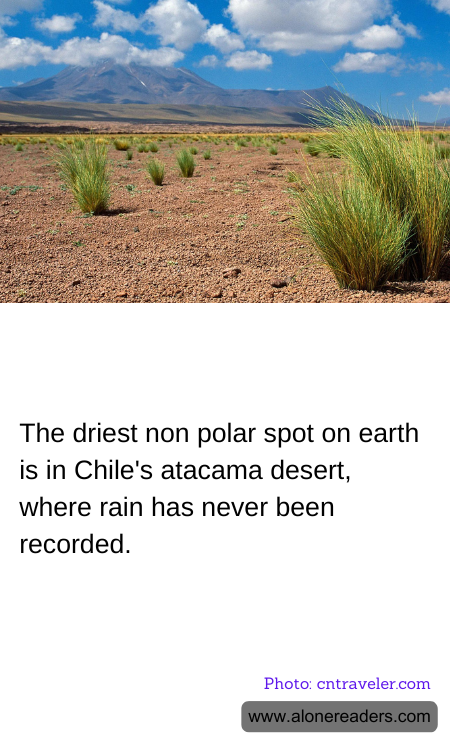
Chile's Atacama Desert, renowned as the driest non-polar spot on Earth, presents an extreme landscape that stretches approximately 1,000 kilometers along the Pacific coast of Chile. Its unique geographical and climatic features make it an extraordinary biome, almost devoid of moisture. Some areas of the Atacama have not experienced rainfall for centuries, creating an environment so arid that it mirrors the harsh conditions found on Mars.
The reasons behind the extreme dryness of the Atacama Desert lie in its location and the surrounding geographical features. It is tucked between two mountain ranges - the Andes and the Chilean Coast Range, which create a double rain shadow effect, severely limiting the amount of moisture that reaches the area. Additionally, the cold Humboldt Current off the coast of Chile lowers the temperature of the surrounding air, reducing evaporation and contributing to the aridity.
Due to its stark conditions, the Atacama Desert has become an invaluable analog for planetary scientists studying Mars. The soil composition, aridity, and overall climate mimic those of the Martian surface, providing researchers with a terrestrial laboratory where they can conduct experiments and test space-proven technologies. This desert also hosts various astrobiology studies exploring life's adaptability in extreme conditions.
Despite its desolate nature, the Atacama is not devoid of life. Certain bacteria, fungi, and even some hardy animals have adapted to this harsh environment, exemplifying the resilience and adaptability of life. These organisms often survive by drawing moisture from the fog that occasionally rolls over the landscape, a phenomenon known as "Camanchaca."
The Atacama Desert not only challenges the understanding of life on Earth but it also beckons tourists and adventurers alike who wish to experience its haunting beauty. The desert is home to surreal landscapes, including salt flats, sand dunes, and rock formations that paint a vibrant picture of Earth's geological past. It also offers clear skies for most of the year, making it an ideal spot for astronomical observations.
In conclusion, the Atacama Desert showcases the diverse tapestry of Earth's ecosystems. By studying this extreme environment, scientists can glean insights into Earth's climatic and geological history, the adaptability of life, and the possibilities of existence on other planets. Its unmatched dryness, combined with its scientific and aesthetic value, cements the Atacama's status as one of the most fascinating places on the planet.